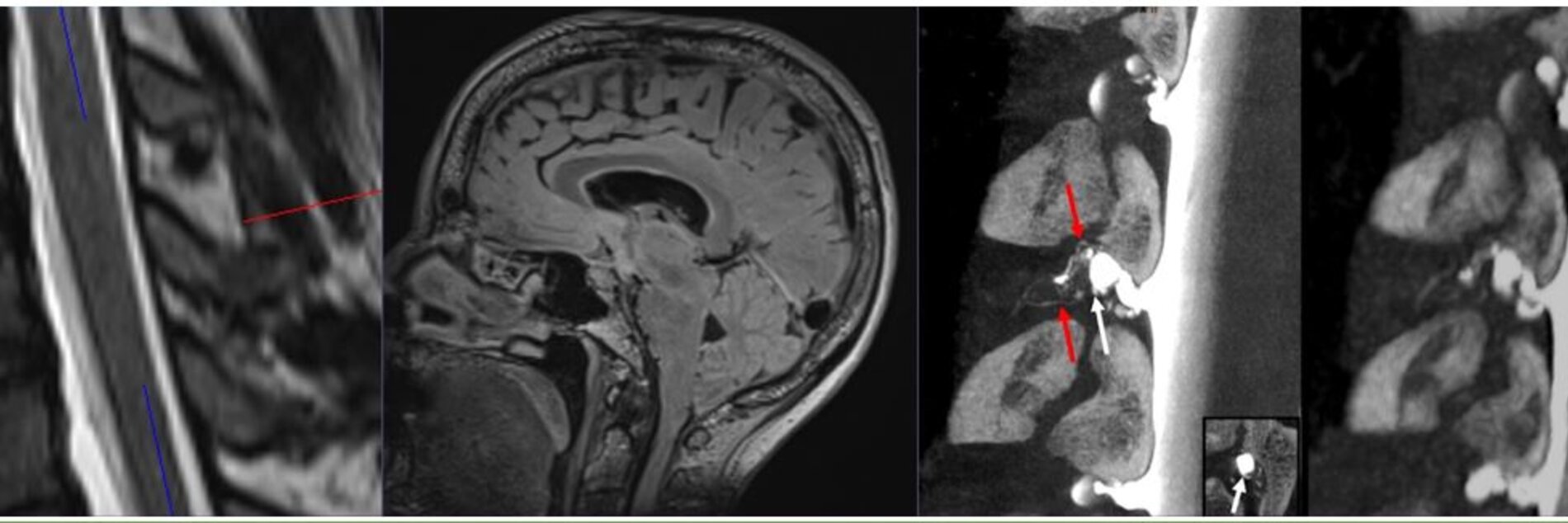Spontaneous Intracranial Hypotension (SIH)

What does SIH stand for?
"Spontaneous" means that there is no direct trigger or cause, such as a bone fracture, sneazing, or accident. Intracranial Hypotension means: low pressure inside the head.
low pressure headache | Low-ICP-Syndrom | Spinale CSF leak Headache |
Hypoliquorrhoe-Syndrome | CSF Leak | Orthostatic Headache Syndrome |
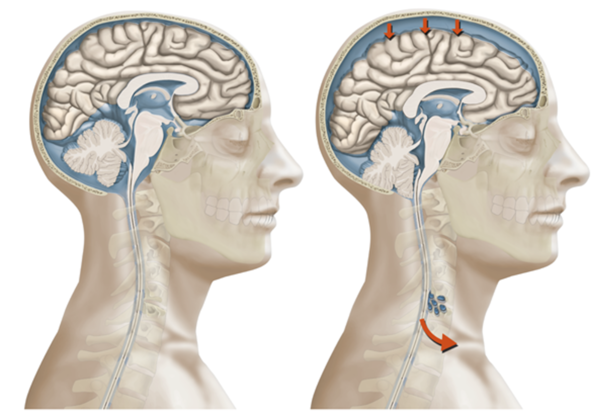
What causes SIH?
Spontaneous intracranial hypotension is caused by the loss of cerebrospinal fluid (CSF) at the spine. There are various ways this loss can occur (leak types). What they all have in common is that the loss of fluid disrupts the regulation of the system. You can learn about the different types of possible spinal CSF leaks here.
While the pressure between spine and head is still balanced when lying down, standing up (orthostasis) leads to a shift of the fluid from the head to the spinal compartment. This creates low pressure inside the head and can result in a variety of symptoms and complications. The most common complaint from patients is headaches.
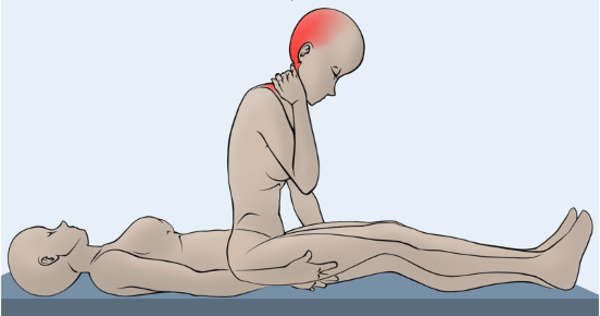
What are the symptoms of SIH?
Most patients with SIH complain of headaches, often in the back of the head and neck. These headaches occur or worsen when they stand up. When lying down, the symptoms significantly improve or even disappear completely.
In addition, there are many different accompanying symptoms, including nausea, vomiting, dizziness, hearing and vision disturbances, sensory disturbances, sensitivity to noise and light, "brain fog", concentration difficulties, and many more. Symptoms often change over time and may not be equally severe every day.
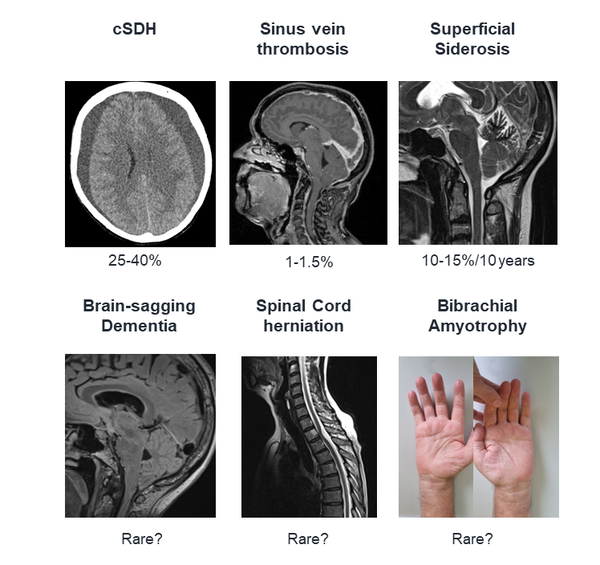
Can SIH cause permanent damage?
The following complications can occur:
- chronic headache
- Brain bleeding (chronic subdural hematoma)
- Sinus vein thrombosis
- Inner ear damage with hearing loss
- Chronic blood deposits in the brain and spinal cord (superficial siderosis)
- Dementia (similar to frontotemporal dementia)
- Muscle weakness and atrophy in the arms (bibrachial amyotrophy)
- spinal cord herniation
Coma
How can SIH be detected?
The first diagnostic step is a MRI of the head and spine. You can find more information about diagnostic options here.
There is no need to measure opening pressure. In most SIH patients, opening pressure in supine position is normal.
MRI tells you the probability of a spinal CSF leak, not the leak site. Dynamic myelographies are required to localize the leak for targeted treatments. The technique differes from standard myelogram techniques and requires some expirience.
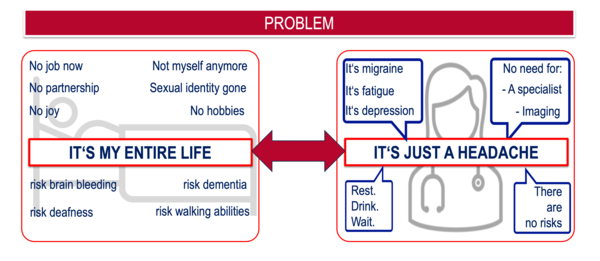
Is SIH common?
Current estimates of the incidence rate are around 4 per 100,000 per year (Schievink et al., Cephalalgia 2022).
However, we believe there is a significantly higher number of undiagnosed cases. Patients are often not diagnosed or are misdiagnosed and treated as migraine, fatigue, or somatization disorder.
Can SIH be treated?
Yes. And it should be treated.
Here, you can find guidelines for the treatment of SIH.
You can read more information about our interdisciplinary CSF team, our diagnostic capabilities, and treatment options on these pages.
You can find contact information here.
Additional informational materials and useful links can be found here.
Here you can find general informations and instructions regarding
Klinik für Neurochirurgie
im Neurozentrum
Breisacher Straße 64
D-79106 Freiburg
Telefon: 0761 270-50010 /-50020
Telefax: 0761 270-50240
neurochirurgie@uniklinik-freiburg.de
Prof. Dr. Jürgen Beck
Ärztlicher Direktor
Telefon: 0761 270-50060
International call: +49-761-270-50060
j.beck@uniklinik-freiburg.de

André Doherr
Pflegedienstleiter
Telefon 0761 270-52260
Telefax 0761 270-54200
andre.doherr@uniklinik-freiburg.de

Christian Böke
Kaufmännische Geschäftsführung Neurozentrum
Telefon: +49 761 270-21071
christian.boeke@uniklinik-freiburg.de

